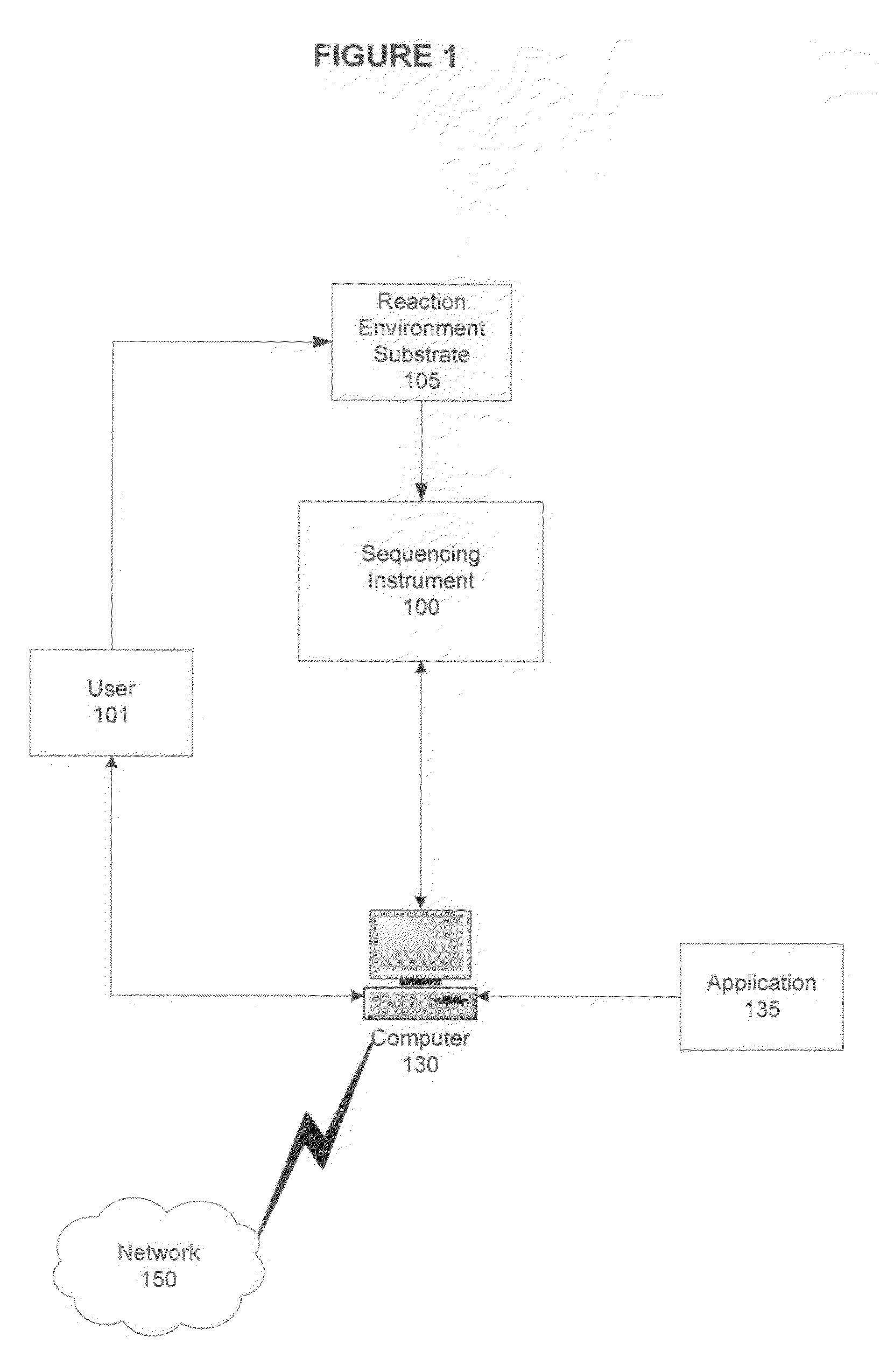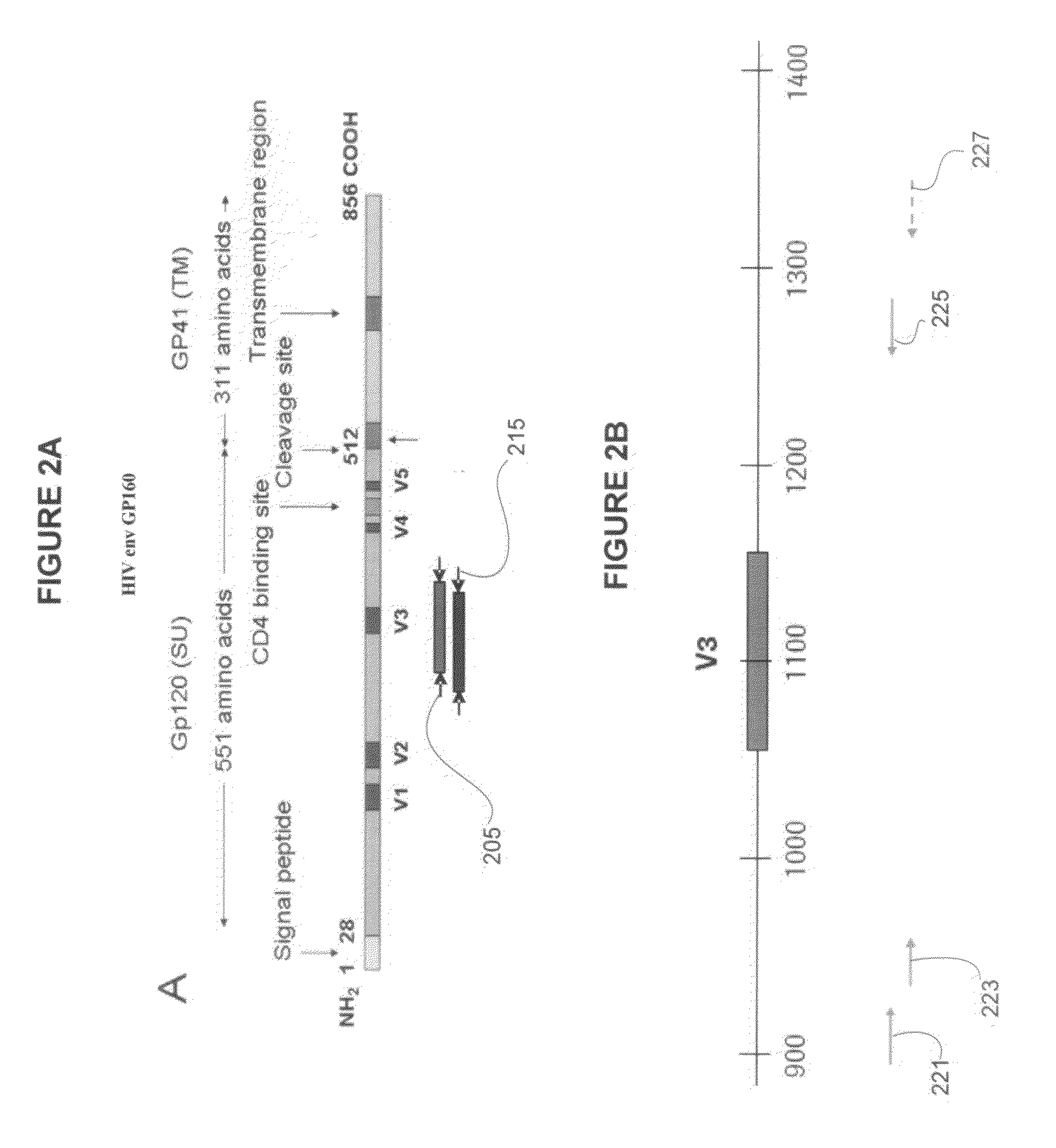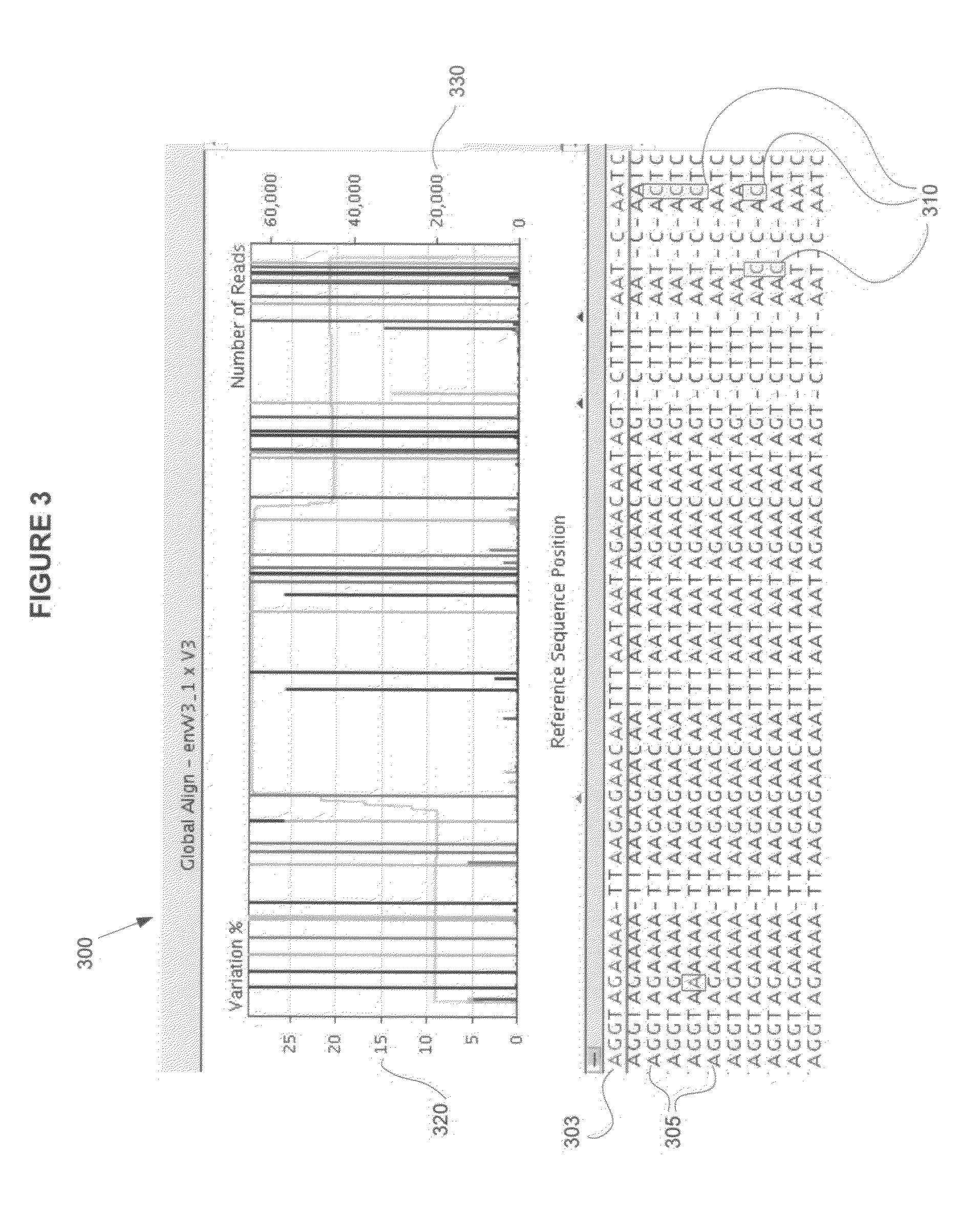System and method for detection of HIV tropism variants
a technology of hiv tropism and detection method, which is applied in the field of system and method for detection of hiv tropism variants, can solve the problems of accelerating treatment failure, hiv genome mutation very rapidly, and continuing to be a major problem worldwid
- Summary
- Abstract
- Description
- Claims
- Application Information
AI Technical Summary
Benefits of technology
Problems solved by technology
Method used
Image
Examples
Embodiment Construction
[0017]As will be described in greater detail below, embodiments of the presently described invention include systems, methods, and kits for targeted sequencing using primer species specific to amplify sequence regions comprising HIV variants, and using those amplified sequence regions for highly sensitive detection of the variants.
[0018]In particular, embodiments of the invention relate to investigating HIV tropism variation by sequencing in parallel a population of target nucleic acid sequences amplified from a sample, detecting each variant that is present in at least 1% of the population, and associating the detected variants with a therapeutic regimen. In one embodiment, one or more target regions from a representative proportion of the total population HIV virus in a sample are clonally replicated by polymerase chain reaction (PCR), where the clonal populations (also referred to as “amplicons”) are each derived from a single viral particle. The clonal populations are sequenced ...
PUM
| Property | Measurement | Unit |
|---|---|---|
| Fraction | aaaaa | aaaaa |
| Fraction | aaaaa | aaaaa |
| Fraction | aaaaa | aaaaa |
Abstract
Description
Claims
Application Information
 Login to View More
Login to View More - R&D
- Intellectual Property
- Life Sciences
- Materials
- Tech Scout
- Unparalleled Data Quality
- Higher Quality Content
- 60% Fewer Hallucinations
Browse by: Latest US Patents, China's latest patents, Technical Efficacy Thesaurus, Application Domain, Technology Topic, Popular Technical Reports.
© 2025 PatSnap. All rights reserved.Legal|Privacy policy|Modern Slavery Act Transparency Statement|Sitemap|About US| Contact US: help@patsnap.com



